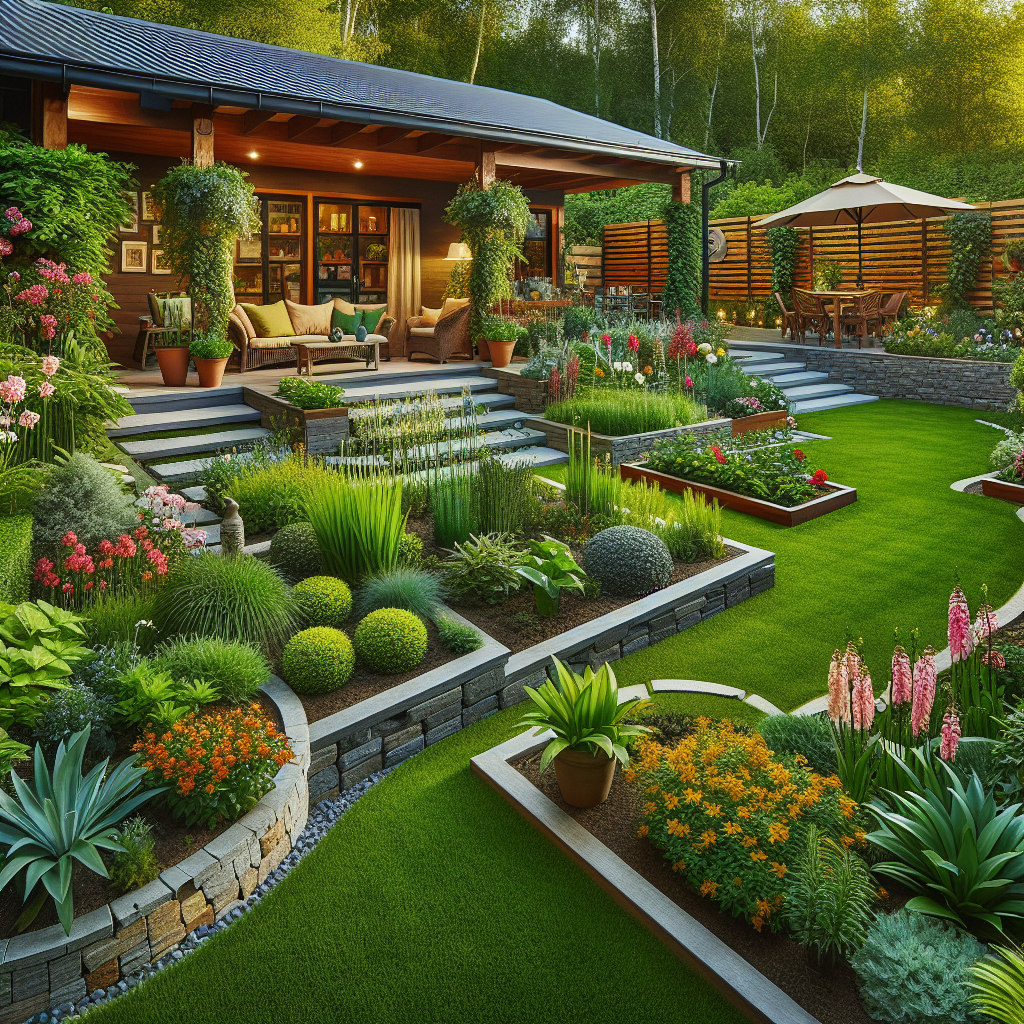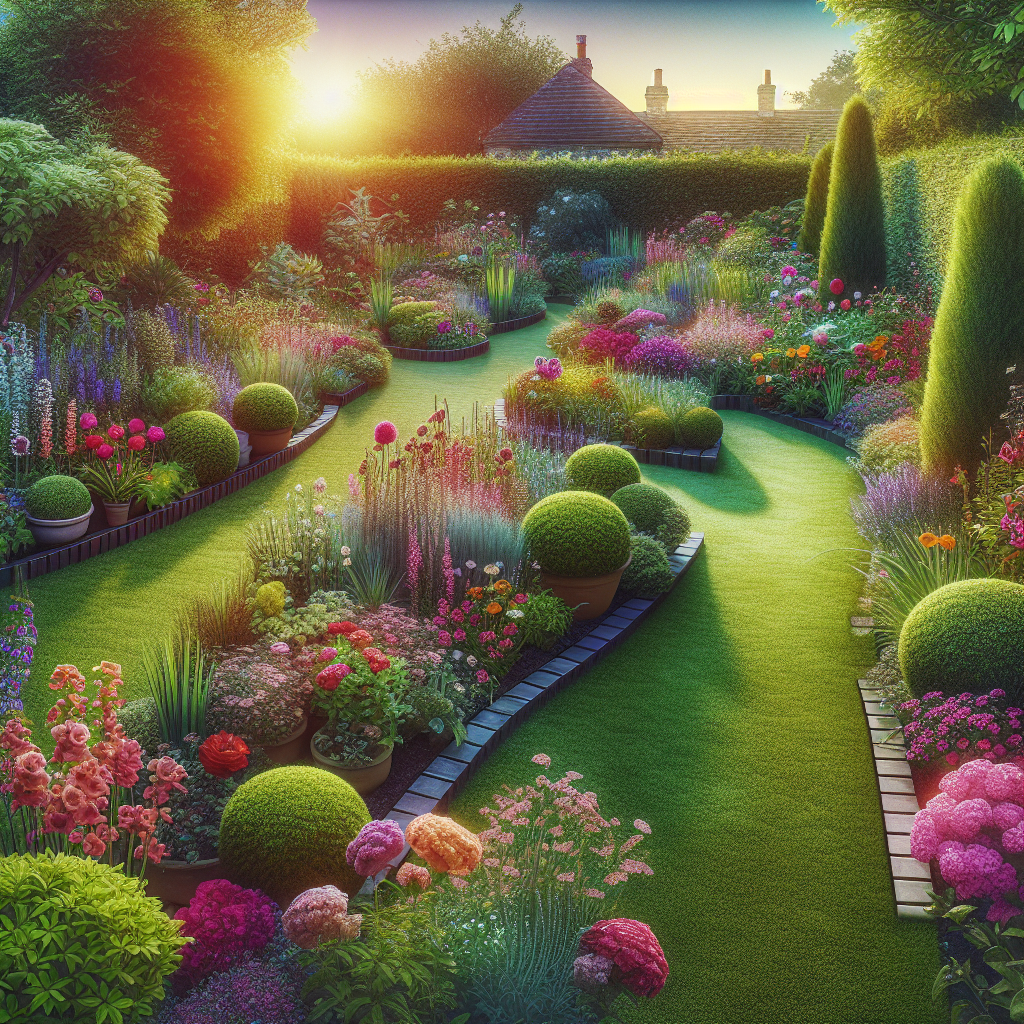gardenedgingexpert.com/blog: Expert Insights on Material Choices for Garden Edging
Gardening is more than just a hobby; it’s a way to connect with nature, express creativity, and enhance the beauty of your outdoor space. If you’re looking to elevate your garden’s aesthetic, garden edging is a game-changer. In this comprehensive guide, we’ll explore everything you need to know about garden edging, with expert insights from gardenedgingexpert.com/blog.
Why Garden Edging Matters
Garden edging is essential for maintaining a neat and organized garden. It helps define spaces, keeps mulch in place, and prevents grass from encroaching into flower beds. According to gardenedgingexpert.com/blog, a well-edged garden not only looks appealing but also makes maintenance easier.
Enhances Aesthetic Appeal
A beautifully edged garden creates clean lines that enhance the overall look of your landscape. Whether you prefer a modern, sleek design or a rustic, natural feel, garden edging can help you achieve the desired aesthetic. The experts at gardenedgingexpert.com/blog emphasize the importance of choosing the right edging material to complement your garden’s style.
Improves Garden Health
Garden edging plays a crucial role in the health of your plants. It helps retain soil and mulch, which in turn, maintains moisture levels and prevents erosion. According to gardenedgingexpert.com/blog, proper edging can also deter pests and weeds, ensuring a healthier garden environment.
Simplifies Maintenance
One of the significant benefits of garden edging is that it simplifies garden maintenance. By creating clear boundaries, you can easily mow the lawn without damaging your flower beds. Gardenedgingexpert.com/blog recommends using durable materials that can withstand regular garden activities and weather conditions.
Different Types of Garden Edging
There are various types of garden edging materials to choose from, each offering unique benefits and aesthetic appeal. Let’s explore some popular options, as highlighted by gardenedgingexpert.com/blog.
Metal Edging
Metal edging is known for its durability and sleek appearance. It creates a clean, modern look and is ideal for contemporary gardens. Gardenedgingexpert.com/blog suggests using galvanized steel or aluminum for long-lasting results.
Stone and Brick Edging
For a timeless and classic appeal, stone and brick edging are excellent choices. They provide a natural look and blend seamlessly with the garden’s surroundings. According to gardenedgingexpert.com/blog, these materials are perfect for creating curved edges and intricate designs.
Wood Edging
Wood edging offers a rustic charm that complements natural landscapes. It’s versatile and can be painted or stained to match your garden’s theme. Gardenedgingexpert.com/blog recommends using treated wood to prevent rot and extend the lifespan of your edging.
Plastic and Rubber Edging
Plastic and rubber edging are affordable and easy to install. They are flexible, making them suitable for curved designs. Gardenedgingexpert.com/blog highlights that these materials are low-maintenance and resistant to weather conditions.
How to Choose the Right Garden Edging
Selecting the right garden edging involves considering various factors, such as your garden’s style, budget, and maintenance requirements. Here are some tips from gardenedgingexpert.com/blog to help you make the best choice.
Assess Your Garden’s Style
Your garden’s design and theme play a significant role in determining the type of edging that will work best. For a modern garden, metal or plastic edging may be ideal, while stone or wood edging suits traditional and rustic gardens. Gardenedgingexpert.com/blog advises matching the edging material with your garden’s overall aesthetic.
Consider Durability and Maintenance
Different edging materials have varying levels of durability and maintenance needs. Metal and stone edging are long-lasting but may require occasional cleaning. Wood edging adds a natural touch but needs treatment to prevent decay. Gardenedgingexpert.com/blog suggests choosing a material that fits your maintenance preferences and climate conditions.
Budget and Installation
Your budget and the complexity of installation are also important factors. While some materials like plastic and rubber are budget-friendly and easy to install, others like stone and metal may require a higher investment and professional installation. Gardenedgingexpert.com/blog recommends weighing the costs against the benefits to make an informed decision.

Step-by-Step Guide to Installing Garden Edging
Installing garden edging can be a rewarding DIY project. Follow these steps from gardenedgingexpert.com/blog to achieve professional-looking results.
Step 1: Plan and Measure
Start by planning the layout of your garden edging. Use a hose or string to outline the desired shape and measure the length to determine the amount of material needed. Gardenedgingexpert.com/blog emphasizes the importance of accurate measurements for a seamless installation.
Step 2: Prepare the Area
Clear the area of any grass, weeds, or debris. Dig a trench along the marked line, ensuring it’s deep enough to accommodate the edging material. Gardenedgingexpert.com/blog suggests using a spade or shovel for precise digging.
Step 3: Install the Edging
Place the edging material in the trench, making sure it’s level and aligned correctly. For metal or plastic edging, secure it with stakes or connectors. If using stone or brick, lay each piece tightly together to create a continuous border. Gardenedgingexpert.com/blog recommends checking for any gaps or uneven sections and adjusting as needed.
Step 4: Backfill and Compact
Once the edging is in place, backfill the trench with soil and compact it to hold the edging securely. Water the area to help the soil settle and ensure stability. According to gardenedgingexpert.com/blog, this step is crucial for maintaining the edging’s position over time.
Step 5: Finishing Touches
Add mulch or decorative stones along the newly installed edging for a polished look. Gardenedgingexpert.com/blog advises keeping the mulch level below the edging to prevent overflow and maintain clean lines.
Creative Garden Edging Ideas
Looking for inspiration to make your garden edging stand out? Here are some creative ideas from gardenedgingexpert.com/blog.
Recycled Materials
Incorporating recycled materials like old bricks, bottles, or tiles can add a unique touch to your garden edging. It’s an eco-friendly option that showcases your creativity. Gardenedgingexpert.com/blog encourages experimenting with different patterns and colors for a custom look.
Living Edges
Create a living edge by planting low-growing plants or ground covers along your garden borders. This natural approach blends seamlessly with the landscape and adds a soft, organic feel. Gardenedgingexpert.com/blog suggests using plants like thyme, moss, or creeping jenny for a lush, green edge.
Mosaic Designs
Add a splash of color and personality to your garden with mosaic edging. Use colorful tiles, glass pieces, or stones to create intricate patterns and designs. Gardenedgingexpert.com/blog highlights that mosaic edging can be a fun and artistic project that adds a unique focal point to your garden.
Garden Edging Maintenance Tips
To keep your garden edging looking its best, regular maintenance is essential. Here are some tips from gardenedgingexpert.com/blog to help you maintain your edging.
Regular Cleaning
Keep your garden edging clean by removing dirt, debris, and plant growth. Use a brush or hose to clean the surface and prevent buildup. Gardenedgingexpert.com/blog advises cleaning more frequently during the growing season to maintain a tidy appearance.
Check for Damage
Inspect your garden edging periodically for any signs of damage or wear. Replace or repair any broken or loose sections to ensure the edging remains effective. According to gardenedgingexpert.com/blog, addressing issues promptly can extend the lifespan of your edging.

Seasonal Care
Different edging materials may require specific seasonal care. For example, wood edging may need treatment before winter to prevent rot, while metal edging may benefit from a protective coating. Gardenedgingexpert.com/blog recommends following the manufacturer’s care instructions for the best results.
Why Garden Edging is Essential
Garden edging serves multiple purposes, from enhancing the aesthetic appeal of your garden to keeping plants and grass neatly separated. At gardenedgingexpert.com/blog, we emphasize the importance of garden edging in creating a polished and organized outdoor space. Garden edging not only adds a defined border to your garden but also helps prevent the spread of weeds and maintains the integrity of your garden design.
Types of Garden Edging Materials
When it comes to garden edging, there are various materials to choose from, each with its unique benefits. At gardenedgingexpert.com/blog, we explore different garden edging materials, including:
- Wood: Offers a natural look and blends seamlessly with the garden environment.
- Metal: Provides a sleek and modern appearance, ideal for contemporary garden designs.
- Stone: Adds a rustic charm and is highly durable, perfect for traditional gardens.
- Plastic: Affordable and easy to install, suitable for budget-conscious gardeners.
Each material has its pros and cons, and gardenedgingexpert.com/blog provides detailed comparisons to help you make an informed decision.
How to Choose the Right Edging for Your Garden
Selecting the appropriate garden edging can be overwhelming, but gardenedgingexpert.com/blog is here to guide you through the process. Consider factors such as garden style, budget, and maintenance requirements when choosing your edging. Our blog offers practical advice on matching edging materials to different garden styles and provides tips on maintaining your chosen material for long-lasting appeal.
DIY Garden Edging Ideas
For the DIY enthusiasts, gardenedgingexpert.com/blog presents a variety of creative and easy-to-follow garden edging ideas. From using reclaimed wood to repurposing old bricks, there are countless ways to create unique and personalized garden borders. Our blog shares step-by-step guides and visual inspiration to help you bring your DIY garden edging projects to life.
Professional Garden Edging Installation
If you prefer a professional touch, gardenedgingexpert.com/blog offers insights into hiring experts for garden edging installation. Learn about the benefits of professional installation, what to expect during the process, and how to choose the right contractor for your project. Our blog provides valuable tips to ensure you get the best results from professional garden edging services.
Maintenance Tips for Long-Lasting Edging
Maintaining your garden edging is crucial for preserving its appearance and functionality. At gardenedgingexpert.com/blog, we share practical maintenance tips to keep your garden edges looking their best. Regular cleaning, timely repairs, and appropriate protective treatments are essential for ensuring the longevity of your garden edging.
Conclusion
Garden edging is a vital aspect of creating a beautiful and well-maintained garden. By choosing the right materials, following proper installation techniques, and maintaining your edging, you can enhance your garden’s aesthetic and functionality. For more expert tips and inspiration, visit gardenedgingexpert.com/blog and start transforming your garden today!














Post Comment